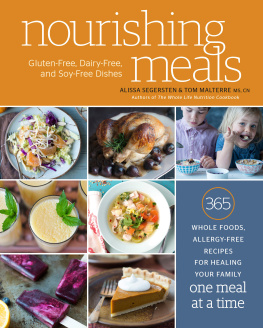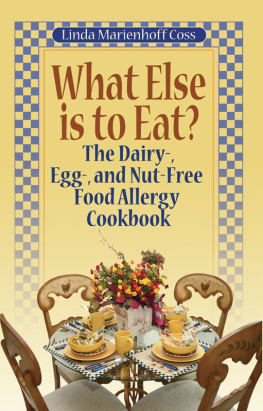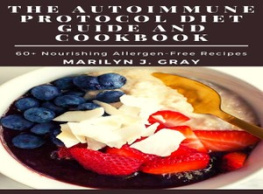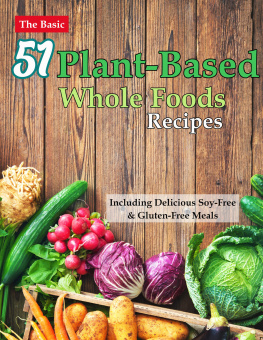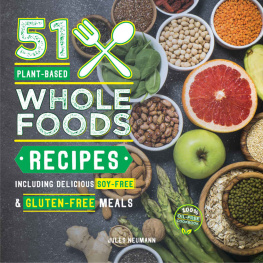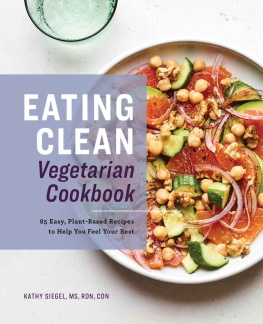Desserts

O ur take on dessert is to keep them as simple and wholesome as possible. Natural sweeteners are used in place of refined sugars. Whole-grain gluten-free flours and grain-free flours are used instead of refined flours. Organic fruits and nuts are the base for many desserts, and avocados are added for healthy fats in some recipes. Youll find that when your diet consists of real, whole foods, with plenty of vegetables and enough fat and protein, you may not even crave sugar! Dessert will naturally become something to be savored and eaten in moderation.
When we consume dessert in our home, it is usually a scoop of homemade ice cream topped with frozen organic berries. Cookies are baked occasionallyonly about twice a month. Baked pies are enjoyed a few times a year on special occasions, and fruit crisps are made when there is too much fruit to process in the summertime. By consuming dessert on occasion, instead of every day, your children will learn to develop a healthy relationship with the sweet flavor.
ALTERNATIVES TO REFINED SUGAR
Eliminating refined sugars from your familys diet can help improve everyones health. When consuming white sugar, the body needs to tap into its stores of B vitamins and minerals, such as calcium and magnesium, to properly digest it. A child who is a picky eater and is consuming an unbalanced diet high in refined foodsor who has a damaged upper intestine and is therefore not absorbing sufficient magnesium and calciumwill suffer the most from sugar consumption. Over time, consuming sugar can lead to nutrient deficiencies, yeast overgrowth, inflammation, weight gain, dental cavities, insulin resistance, hypoglycemia, lowered immunity, erratic behavior, poor concentration, learning disabilities, and cancer cell growth. Sugar is a main ingredient in many processed foods, so working to eliminate those will drastically cut down on total daily intake.
Natural sweeteners contain all the vitamins, minerals, and phytochemicals found in the plant they came from. They often digest slower than refined white sugar, and they actually have some nutritional value. But remember, natural sweeteners are still sugar, so use them wisely and sparingly!
Most of the sugar in processed food these days does not even come from cane sugar anymore. When you see the word sugar on a food label, the product is typically made from sugar beets. Beet sugar is often genetically modified and carries a great amount of neonicotinoid pesticidessystemic pesticides that cannot be washed off. Neonic pesticides are also responsible for something that has been termed colony collapse disorder affecting our bee populations. Avoiding processed foods and sugars also means that you are helping to create a healthier planet!
10 Tips for Using Natural Sweeteners
Coconut Nectar is the sap from the coconut palm tree. It is very thick and rich with a low glycemic index of about 35, meaning it wont spike blood sugar as quickly as other sweeteners. It contains very little glucose and fructose, a small percentage of sucrose, and a high percentage of fructooligosaccharides (FOS). These indigestible sugars, or prebiotics, feed beneficial bacteria in the gut! Use coconut nectar anytime a liquid sweetener is called for.
Local Honey is a simple sugar of mostly glucose and fructose. It is easily digested and can be used anytime a liquid sweetener is called for. Raw honey has a much lower glycemic index than pasteurized honey, so always read labels or talk to your local beekeepers to find a source of raw honey. When combined with eggs in a baked good, honey can cause a lot of browning, which is why I prefer to use as little as possible in my recipes. You can replace part of the honey called for in a recipe with unsweetened applesauce and add liquid stevia to boost sweetness if desired.
Maple Syrup is mostly sucrose. Because of this it doesnt cause a lot of browning when baked, but it offers a distinct maple flavor. Use it anywhere a liquid sweetener is called for. Remember to always purchase pure maple syrup made entirely from the sap of the sugar maple tree. We prefer to use grade B, which is cheaper and richer in flavor than grade A. Imitation maple syrup is full of nonfood chemicals like caramel color, flavorings, and high fructose corn syrup.
Coconut Sugar is basically dried and granulated coconut nectar, and it comes with the same low-glycemic properties. It is light brown in color and the flavor is rich and caramel-like. Use it anytime a granulated sugar is called for.
Maple Sugar is simply dried and granulated pure maple syrup. It is quite expensive but very tasty. It will give your desserts a distinct maple flavor. Use it anytime a granulated sugar is called for.
Whole Cane Sugar is the dried juice of the sugar cane plant. It is dark brown in color and rich in flavor. It has a much higher glycemic index compared to coconut sugar, but is less expensive and easier to come by. You can use it in place of coconut sugar, if desired.
Medjool Dates can be soaked in hot water and pureed into a paste to be used in cakes, muffins, or cookies. You can use dates as a primary sweetener in many recipes, but you will need to lessen other liquids in the recipe.
Mashed Ripe Bananas are such a perfect natural sweetener! The riper your bananas, the sweeter they will be. You can puree bananas in a blender and use the puree to replace any liquid sweetener.
Prunes work in a similar fashion to dates, but are less sweet and higher in fiber. They can be used to thicken, bind, and sweeten most baked treats. To make prune puree, place 1 cup of prunes in a bowl and cover with 1 cup of boiling water. Soak for 20 minutes, then pour the soaked prunes and water into a blender and puree. You can use this in place of applesauce or other liquid sweeteners in most recipes.
Stevia has zero calories and a glycemic index of zero. It can be used to sweeten treats without adding sugar. Stevia is a green plant that grows in warm climates. Weve been able to successfully grow it in our garden in the Northwest, but it doesnt survive our cool winters. We prefer to use the powdered whole dried leaf (it should be green) because it is less processed than other types of stevias. If you are using ingredients in a recipe that are naturally sweet, such as applesauce, mashed banana, or coconut flour, then add about teaspoon powdered whole leaf stevia to boost the sweetness, if desired.
maple sunflower seed candy
FREE OF
MAKES ABOUT 3 DOZEN CANDIES
I use organic Sunbutter, a butter made from roasted sunflower seeds (the nonorganic versions have sugar and other stuff added). I also prefer to use grade B maple syrup over grade A because it has a richer flavor. This candy easily burns if it is not tended to or if the heat is too high, so watch it carefully. Add one of these candies to your childs lunchbox as a sweet treat. They are also fun to make for Halloween or as a Christmas stocking stuffer.
1 cup pure maple syrup
cup organic sunflower seed butter
teaspoon sea salt
Place the maple syrup, sunflower butter, and salt in a 2-quart stainless steel pot with a thick, heavy bottom. Whisk well, then turn the heat to high and bring to a boil, whisking constantly. Immediately reduce the heat to medium or medium-high to maintain a steady, low boil. Whisk continuously for about 8 minutes, or until the candy thickens and begins to stick to the bottom of the pan. Remove from the heat and remove the whisk (otherwise the candy will get stuck inside of the wires as it cools). Let cool until the temperature is low enough to handle, 5 to 10 minutes; any longer and the candy will get too hard to work with.
Next page
